Buying Guide for the Best Gaming Monitors
Choosing the right gaming monitor can make a big difference in your gaming experience. The right monitor will not only make your games look better, but it can also help you react faster and play more comfortably. When shopping for a gaming monitor, it's important to think about what types of games you play, how much space you have, and what features matter most to you. Understanding the key specifications will help you find a monitor that matches your needs and gives you the best possible experience.Screen SizeScreen size refers to the diagonal measurement of the display, usually in inches. A larger screen can make games more immersive and easier to see, but it also takes up more space on your desk. Smaller screens, like 24 to 27 inches, are great for fast-paced games and competitive play because you can see everything without moving your head much. Larger screens, like 32 inches or more, are better for immersive single-player games or if you sit farther from your monitor. Think about your desk space and how close you sit to the screen when choosing the right size for you.
ResolutionResolution is the number of pixels on the screen, which affects how sharp and detailed the image looks. Common resolutions are Full HD (1920x1080), Quad HD (2560x1440), and 4K (3840x2160). Higher resolutions give you clearer images, but they also require a more powerful computer to run games smoothly. If you play fast-paced games and want high frame rates, a lower resolution like Full HD or Quad HD might be better. If you want the best visuals and have a strong computer, 4K is a good choice. Match the resolution to your computer's power and your preference for image quality.
Refresh RateRefresh rate is how many times per second the monitor updates the image, measured in hertz (Hz). A higher refresh rate makes motion look smoother and can give you an edge in fast games. Standard monitors have 60Hz, but gaming monitors often offer 120Hz, 144Hz, 165Hz, or even higher. If you play competitive games like shooters or racing games, a higher refresh rate (at least 120Hz or 144Hz) is recommended. For casual or story-driven games, 60Hz or 75Hz may be enough. Choose a refresh rate that matches the types of games you play and what your computer can handle.
Response TimeResponse time is how quickly a pixel can change from one color to another, usually measured in milliseconds (ms). Lower response times mean less motion blur and ghosting, which is important for fast-moving games. Gaming monitors often have response times of 1ms to 5ms. If you play a lot of action or competitive games, look for a monitor with a response time of 1ms to 3ms. For slower-paced games, a slightly higher response time is usually fine. Pick a response time that matches how sensitive you are to motion blur.
Panel TypePanel type affects the monitor's color quality, viewing angles, and response time. The main types are TN (Twisted Nematic), IPS (In-Plane Switching), and VA (Vertical Alignment). TN panels are fast and affordable but have poorer colors and viewing angles. IPS panels have better colors and wider viewing angles, making them great for both gaming and general use, though they can be a bit slower. VA panels offer good contrast and deep blacks, but sometimes have slower response times. If you want the fastest response for competitive gaming, TN is an option. For better visuals and versatility, IPS is a popular choice. VA is good if you like deep contrast, especially for dark games or movies.
Adaptive Sync TechnologyAdaptive sync technologies like G-Sync and FreeSync help prevent screen tearing and stuttering by matching the monitor's refresh rate to your graphics card's output. This makes gameplay smoother, especially when frame rates change. If you have an NVIDIA graphics card, look for G-Sync support; for AMD cards, look for FreeSync. Some monitors support both. If you notice tearing or stuttering in your games, adaptive sync can make a big difference. Choose a monitor with the right adaptive sync for your graphics card to get the smoothest experience.
ConnectivityConnectivity refers to the types and number of ports on the monitor, such as HDMI, DisplayPort, and USB. More ports give you flexibility to connect different devices like PCs, consoles, or streaming sticks. DisplayPort is often preferred for high refresh rates and resolutions, while HDMI is common for consoles and general use. Some monitors also have USB hubs or headphone jacks for convenience. Think about what devices you want to connect and make sure the monitor has the right ports for your setup.
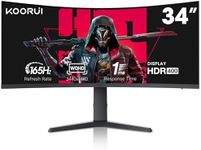
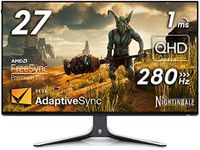
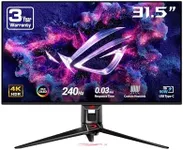
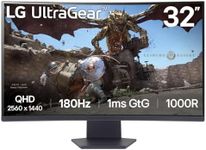

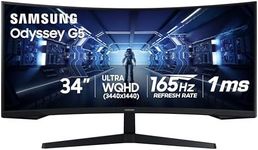
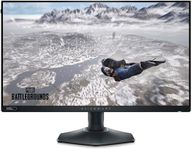
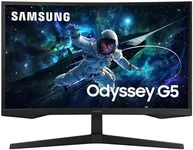

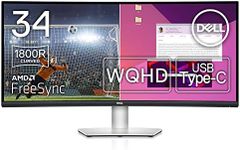


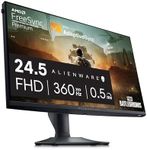
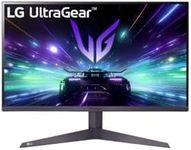
![Samsung 32 inch M5 Black FHD Smart Monitor with Smart TV Apps, Gaming Hub, Multiple ports (LS32DM500ENXGO) [Canada Version] (2024)](https://images-proxy.bestreviews.guide/53VJb_kHYBrEV-iQYNO9QQwd2aI=/0x150/https://m.media-amazon.com/images/I/41nDHZjFdnL._AC_CX679_.jpg)
